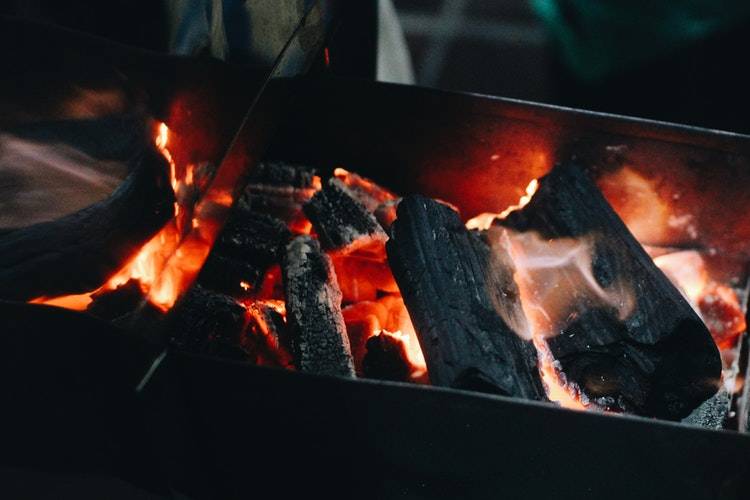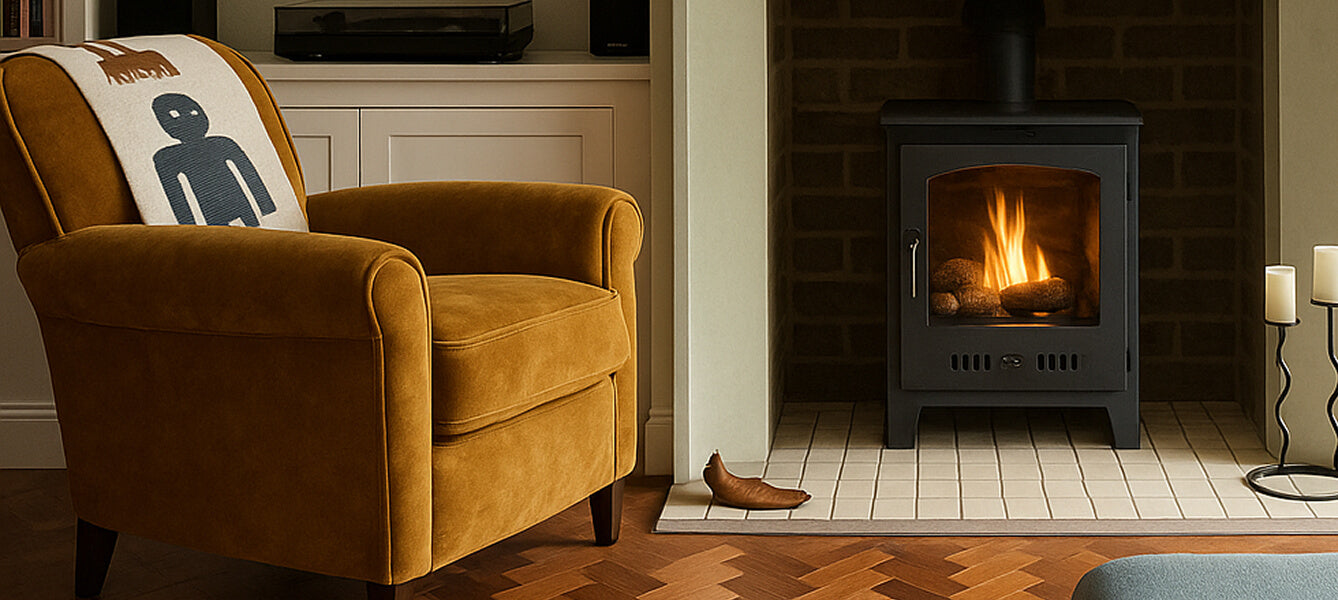
Fitting a Wood Burning Stove with Back Boiler to Central Heating
Looking for a way to combine the charm of a real fire with the practicality of central heating, without harming the environment? A wood burner with a boiler system could be the perfect option for you. Wood burning stoves with back boilers are a greener option than gas or oil boilers, allowing you to generate hot water and run radiators throughout your home without relying on fossil fuels.
In this guide, we’ll explain how a wood burner with a back boiler works, explore the pros and cons of this type of setup, and talk you through how to connect a stove to your central heating.
Please note: This installation must be completed by a professional, and should not be attempted yourself.
What is a back boiler?
A back boiler is a compact water-heating unit that is fitted behind a wood burning or multi-fuel stove. While the stove warms the room, the back boiler captures additional heat from the fire and turns it into water, which is then stored in a hot water cylinder or thermal store. This heat can be used for domestic hot water, central heating radiators, and underfloor heating.
Wood burning stoves with back boilers are especially popular in rural properties that aren’t connected to the grid. Plus, they’re the ideal option if you’re looking to do your bit for the planet and cut down on fossil fuels.
The pros and cons of integrating wood burners with back boilers
If you’re considering adding a wood burning stove with a back boiler to your central heating system, it’s worth being aware of the advantages and potential downsides of this setup.
The main benefits include:
-
Lower fuel bills – this setup only requires wood to run, helping to cut down on your gas and oil usage
-
Eco-friendly – the emissions from burning seasoned wood are significantly lower than fossil fuels
-
Energy resilience – you can heat your home even during power cuts
-
Cosy atmosphere – enjoy getting cosy by the fire in front of a real flame
However, there are some downsides to this setup:
-
Upfront cost – installation is usually more expensive than a standalone stove
-
Space requirements – cylinders or tanks can be bulky and take up lots of space
-
Maintenance – there’s more moving parts to this kind of setup, so you’ll need to inspect and maintain them regularly
Things to consider before installing your system
The most important thing to remember is that you should never attempt this work yourself. You should always employ a qualified heating engineer to carry out this work. If you attempt this work yourself and connect the stove incorrectly, you could be putting yourself and your family at risk. Your installation must meet Building Regulations Part J and be signed off by a HETAS-certified installer or Building Control.
You should also be aware that back boilers usually can’t be fitted to combi boiler systems, as they heat water on demand rather than storing it. When it comes to heating efficiency, roughly 1kW of stove output will heat 10m² of your space if it is well-insulated, but we recommend getting a professional calculation for the exact figures.
How to connect a stove to your central heating in 5 easy steps
-
Assess your existing heating system and make note of whether it's vented, unvented, combi, or conventional.
-
Select your central heating integration type i.e. plumbed loop, hot water priority, multicoil tank, or accumulator.
-
Install the necessary plumbing and controls, including pumps, thermostats, and safety valves.
-
Link your stove’s back boiler to the heating loop or hot water circuit.
-
Test and vent the heating system to make sure it’s safe for use.
Exploring the main installation options
Plumbed stove in a vented system
This is one of the easiest ways to integrate a stove with a back boiler.
How it works:
-
The stove is plumbed into an open-vented heating system, often using gravity circulation. It effectively acts as another radiation in the system.
-
Your main boiler (gas, oil, or LPG) will kick in when extra heat is needed.
Pros:
-
The design of the system is relatively straightforward.
-
You can keep your existing boiler as a backup.
Cons:
-
If it isn’t balanced properly, this type of installation can be less efficient.
-
It might be harder to control the distribution of heat around your home.
Hot water priority setup
If a steady hot water supply is important to you, then you might want to consider a hot water priority setup.
How it works:
-
The hot water cylinder connects directly to your stove.
-
A thermostat monitors the temperature of the cylinder. Once the cylinder reaches the set temperature (e.g. 65°C), the radiator pump will activate.
Pros:
-
You are guaranteed hot water at all times.
-
Reduces unnecessary radiator use, which saves you money.
Cons:
-
You might experience a slight delay before your radiators begin to warm up on cold mornings.
Multicoil hot water tank system
This is the ideal option if you want to combine your stove with other renewable heat sources, such as solar thermal or heat pumps, now or in the future.
How it works:
-
A special hot water cylinder has multiple internal coils – one for the stove, one for solar thermal, and another for a backup boiler or heat pump.
-
Each heat source can either work independently or together.
Pros:
-
This is the perfect system if you’re looking to mix your heating sources.
-
You can easily add solar thermal or heat pump upgrades in the future.
Cons:
-
These systems are typically more expensive to install.
-
They also require more planning and space.
Heat accumulator (thermal store) system
This system is perfect for homes that have varied or intermittent heating sources.
How it works:
-
The stove heats a large, insulated water tank known as a thermal store.
-
The stored heat can be used for hot water and radiators even after many hours.
-
Other heat sources, such as solar panels, can also feed into the store.
Pros:
-
The system delivers hot water to your home even when the stove is out.
-
It’s an excellent option for off-grid or hybrid heating systems.
Cons:
-
The tanks can be bulky and take up lots of space.
-
The system itself is more expensive to purchase initially.
Not ready to commit to a full back boiler installation?
Although wood burning stoves with back burners do offer various benefits, they’re not for everybody. At imaginfires, we supply an impressive range of bioethanol fireplaces that offer that same real flame experience with no tools, tradespeople, or building work required. Simply place your fireplace where you want it, add your fuel, and ignite. Bioethanol fuel is also clean-burning, meaning that the CO₂ it releases when burned is reabsorbed by the next crop; making it even greener than wood burners.
Browse our fireplaces today and discover a smarter, more sustainable way to heat your home.
